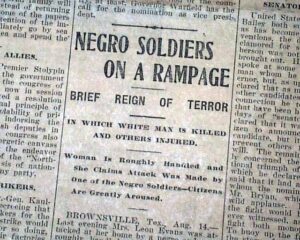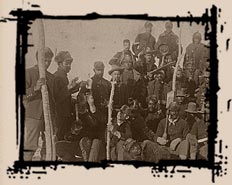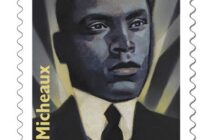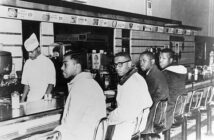
August 13, 1906 The Brownsville Affair started when a white bartender was killed and a white police officer was wounded in Brownsville, Texas. The citizens of Brownsville immediately accused the black soldiers of the 25th Regiment at Fort Brown of the shootings. Despite the facts that the white commanders at Fort Brown confirmed that all of the soldiers were in their barracks at the time of the shooting and evidence that bullet cartridges from army rifles had been planted, Brownsville’s mayor and citizens continued to blame the soldiers. When the soldiers were pressured to name who fired the shots, they insisted that they had no idea.
As a result, United States President Theodore Roosevelt ordered 167 of the black soldiers dishonorably discharged because of their “conspiracy of silence.” They were not given any type of hearing, trial, or the opportunity to confront their accusers. The dishonorable discharge prevented these men from receiving their pensions and ever working in a military or civil service capacity. In 1970, “The Brownsville Raid,” the report of the in depth investigation into the incident which found the accused men to be innocent, was published.
As a result, the U.S. Army conducted another investigation and in 1972 found the accused members innocent and reversed President Roosevelt’s order. The administration of President Richard Nixon overturned the dishonorable discharges of the soldiers, but refused to grant their families the back pension pay. Books about the incident include “The Brownsville Affair: National Crisis and Black Reaction” (1971) and “The Brownsville Raid” (1992)




